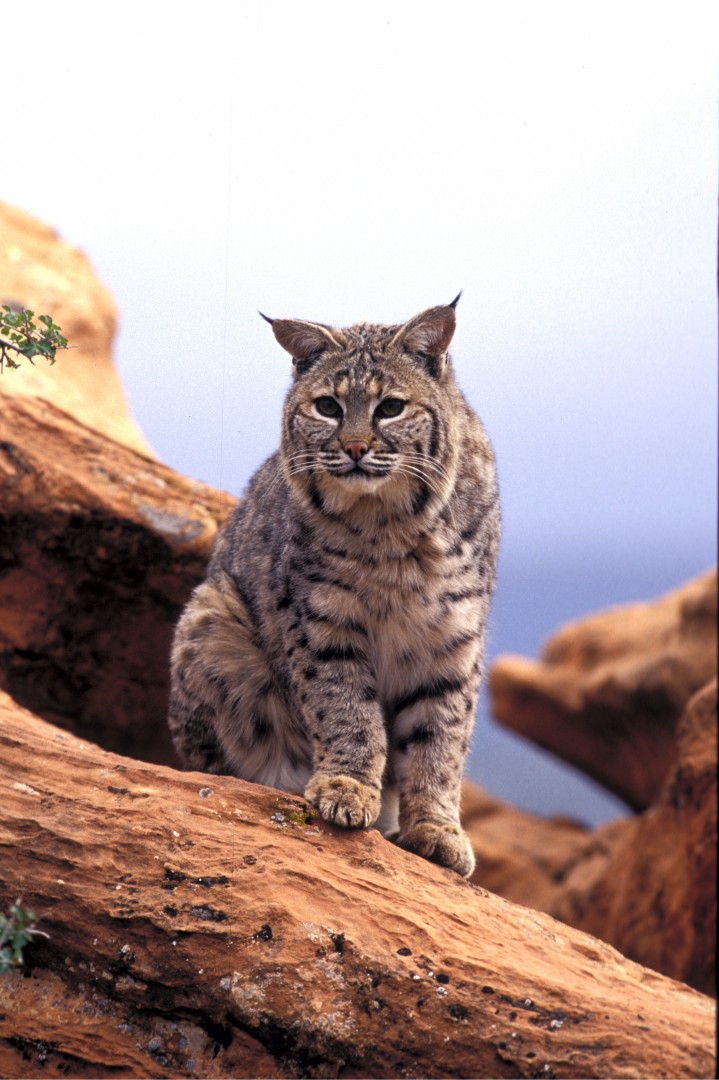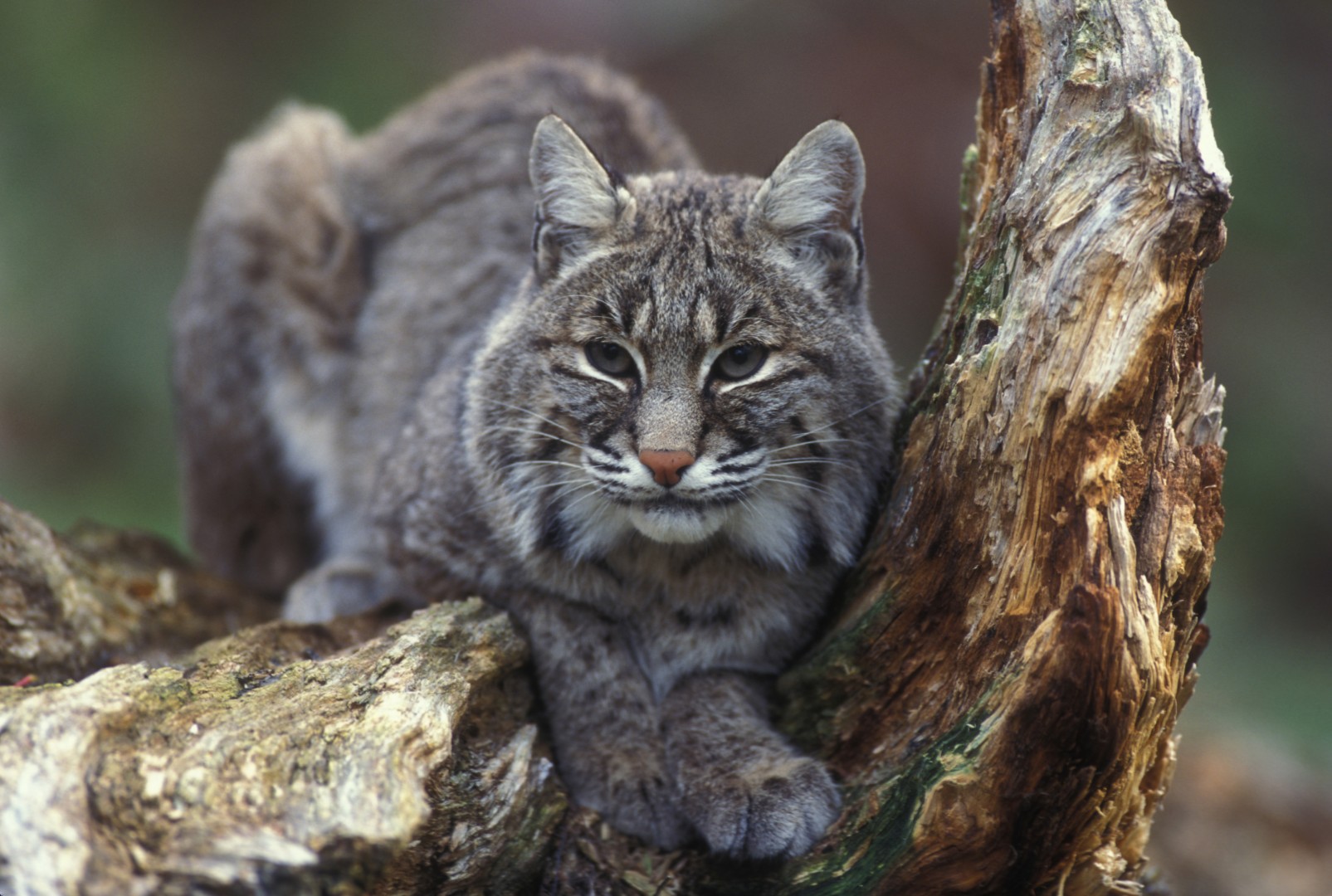
SALT LAKE CITY — Bobcat populations are growing in Utah, and wildlife biologists are recommending changes that could lead to more opportunities for the state’s trappers and hunters to take bobcats in Utah this fall. The recommendations would also result in hunters taking about the same number of cougars this season. During the 2013–2014 season, a total of 330 cougars were taken.

During the 2013–2014 season, the Utah Wildlife Board capped the total number of bobcat permits at 4,600. Leslie McFarlane, mammals coordinator for the Utah Division of Wildlife Resources, or DWR, says the agency is recommending an unlimited number of permits for the 2014–2015 season. However, the number of permits an individual trapper or hunter could obtain would still be limited.
For the 2014–2015 season, the DWR is recommending that each trapper or hunter be allowed to obtain up to six bobcat permits. During the 2013–2014 season, each trapper or hunter could not obtain more than three bobcat permits.
McFarlane says Utah’s Bobcat Management Plan provides biologists with four population performance targets. How close bobcats come to meeting the targets helps biologists determine the health of the state’s bobcat population.
Three of the targets were met this past season. The fourth target — the average number of days a trap was set before it captured a bobcat—was still longer than the time given in the plan. But the time has gotten shorter each of the past four seasons.
“As long as two or more of the targets are met,” McFarlane says, “the total number of permits does not need to be capped. And each trapper or hunter can be allowed to obtain up to six permits.”

The bobcat management plan, including the performance targets the plan outlines, is available at the DWR website.
The DWR is recommending that the upcoming bobcat season run from Nov. 19, 2014, to Feb. 8, 2015.
Learn more, share your ideas
You can let your Regional Advisory Council members know your thoughts by attending your upcoming RAC meeting or by sending an email to them.
RAC chairmen will share the input they receive with members of the Utah Wildlife Board. The board will meet in Salt Lake City on Aug. 28 to approve rules for Utah’s 2014–2015 cougar and furbearer seasons.
Dates, times and locations for the RAC meetings are as follows:
Southern Region
- July 29 | 7 p.m. | Beaver High School | 195 East Center St., Beaver
Central Region
- Aug. 5 | 6:30 p.m. | Springville Public Library Meeting Room | 45 S. Main St., Springville
Southeastern Region
- July 30 | 6:30 p.m. | John Wesley Powell Museum | 1765 East Main St., Green River
Northern Region
- Aug. 6 | 6 p.m. | Brigham City Community Center | 24 North 300 West, Brigham City
Northeastern Region
- July 31 | 6:30 p.m. | DWR Northeastern Region Office | 318 North Vernal Ave., Vernal
You can also provide your comments to your RAC via email. Email addresses for your RAC members are available at Utah Division of Wildlife Resources website. You should direct your email to the people on the RAC who represent your interest.
Related Posts
- RAC meetings to determine rules for waterfowl, bobcat hunting seasons
- Cougar hunting harvest-objective permits go on sale
Email: [email protected]
Twitter: @STGnews
The caption at the top of the article is a Cougar….The cougar, also known as the mountain lion, puma, panther, painter, mountain cat, is a large cat of the family Felidae native to the Americas. I believe the scientific name is Puma concolor. My info is provided by National Geographic. I know that somebody is going to say its the same because its a feline, but it is not. Its like saying a hyena is the same as a dog. GO FALCONS!
STG News is ON IT!!!! I hit submit and the picture changed! Please disregard the above statement. The error has been resolved. Thank you JK!
We actually were on it before you submitted your comment – minds in concert, nice, Josh. 😀
The names are often used interchangeably, Josh, to my understanding. However, to avoid further confusing the matter we replaced that photo you refer to with one by Utah’s own biologist, Lynn Chamberlain, which was provided to represent the Utah bobcats addressed.
Quick keen eye you have! Thank you for sharing, as always,
ST. GEORGE NEWS | STGnews.com
Joyce Kuzmanic
Editor in Chief
Great cover picture of a cougar.
Another great picture of a lynx.
But the story is about bobcats??
Probably the writer/editor is a city boy…. or girl?
Actually neither, Blaine – not sure why your comment was in pending, but we replaced that photo within minutes of publishing it catching my eye that there was a better representation of the Utah bobcat. Refresh the page and see what you think now?
ST. GEORGE NEWS | STGnews.com
Joyce Kuzmanic
Editor in Chief
Yes, the names are sometimes used interchangeably. But, only by people who do not know the difference between the various animals pictured.
Zebras/horses/jackasses and donkeys could also be used interchangeably by some people who are not knowledgeable about the subject they are addressing. Such erroneous interchangeability of use of words does not change the fact that they are completely different creatures.
As an invader is not the same thing as an immigrant, a cougar is not the same thing as a bobcat. Allowing or accepting the misuse of words can get you in many different classes of trouble.
Words can do that – in this case, Blaine, the question we raised concurrently with our friend Josh had to do with the animal in a photograph. As that animal appeared to us to be more along the lines of a mountain lion, we chose to swap it out for the one you see at the top of this report which came from the Division of Wildlife Resources labeled as a Utah bobcat.
But yes, words and images can get us in many different classes of trouble – no argument there, they keep me busy. 🙂
regardless, slaughter is slaughter.. So happy this ” could lead to more opportunities for the state’s trappers and hunters ” The greatest ethical test we are ever going to face is the treatment of those who are at our mercy-Lyn White Lets just keep killing everything and anything on four legs that moves.
I just hope they don’t grant any bobcat permits to anyone who is associated with any of the so called “Chinese” Restaurants in Dixie! 😉
OOOOOOOOH I TAUT I TAW A PUDDY TAT!
Hey, story idea.. I live in apple valley and the cedar point/hilldale area has had some weird cats show up in ppls yards.. they once said bobcats cannot mate with domesticated cats buuuuut, ive seen myself some pretty large footed house cats.. I adopted one that was from a wild litter in that area, she has six toes and fairly large hind feet but she is a gray maine coon style cat… online there is supposedly some scientist that think bobcats are breeding among domesticated cat populations.. anyhew… sad, we live out here and hardly see any wildlife, ive never once seen a bobcat, just pawprints in the snow.
This headline is a sad commentary on our society. As if the main reason wildlife exists is so that some yahoo can go out and shoot it.